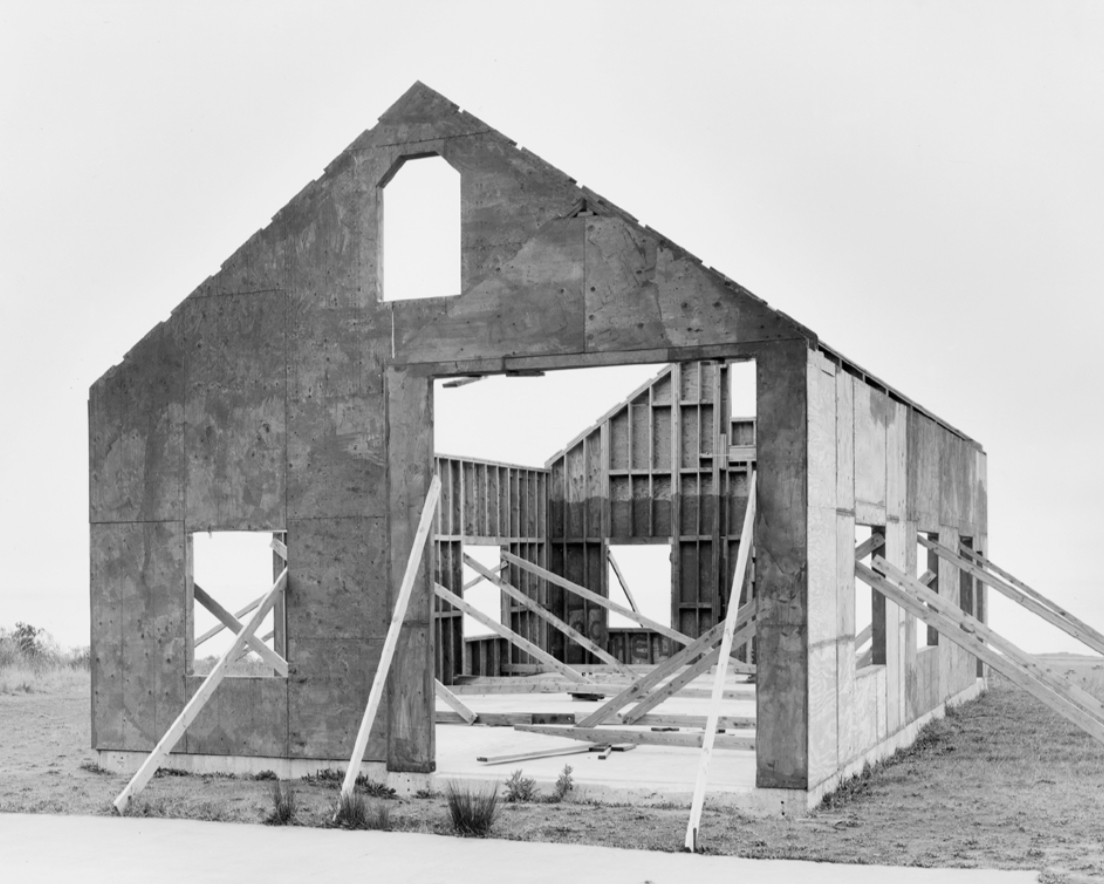The American landscape is empty. It is represented as silent and self-sufficient, only animated and given rhythm by the cycles of nature. Well into the twentieth century, the illusion took shape in photography of landscape as a magnificent, virgin, holy Nature written with a capital N. The “landscape as God,” as Estelle Jussim formulated it, was idealized and inflated as the embodiment of changelessness, eternity, and the divine.
El Capitan, the striking, sublime rock formation in Yosemite Park, was majestically recorded for all eternity by Carleton E. Watkins in 1861; in the same park, the Half Dome was photographed by Ansel Adams in 1960; it appears so grim and sublime in the moonlight that the viewer must shudder looking at it—these isolated landmarks, these monuments of nature (and many others), populate the fantasy of the great expanse: the American landscape as a naturalized divinity, as an immense pantheistic experience. Other than these monuments, the images are void of people. Space, nature, and the great expanse are turned into symbols of fortune and sanctity.
Then at the end of the nineteen-sixties, there was a sudden bursting of the dam, a quaking of pictures, a revolution of experience: Robert Adams, Lewis Baltz, Henry Wessel, Frank Gohlke, Dan Graham, Ed Ruscha, Stephen Shore, and other (at the time, younger) artists opposed this enraptured view with a contemporary, realistic view of concrete, everyday, and banal environs. A real, changing landscape, a manipulated environment, a nature that had been transformed into territory, been taken into possession, become an economic factor as a result. This new generation of photographers violated the idea of the beautiful, existential image of the landscape, in their exhibition New Topographics: Photographs of a Man-Altered Landscape (Rochester, 1975), by simply adding people to the American ideal of a self-contained and sufficient nature: the heroic, poetic I and nature quickly became we and the garden.
Now there are single-family homes, tract houses, or row homes there; it has become an endless front yard for the American middle class. Prefab houses and cities that practically and economically sabotage the Western ideal of the city, with its center and meaningful, hierarchically arranged structure. There has always been someone already there; the landscape is occupied; it has become a landscape of real estate.
The house in this photograph by Onorato & Krebs is reminiscent of such tract houses; it also refers to the series Park City (1979) by Lewis Baltz, who documented the construction of a prefab city. Anyone who travels through America knows that outside of the large cities, the country is almost entirely built of wood—wood that is carefully spackled and plastered on the outside so that the end result looks like a brick house; wood that is carefully draped and covered with wall-to-wall carpeting inside to create a humble and cozy nest or a luxurious den. Anyone who often surfs through the imagery of America will recognize here the fundamental situation of the real estate landscape: construction sites, which do not immediately reveal whether they are in the process of being built or torn down. In these construction sites, the American dream of owning a house is realized through a blockhouse method, and profit is maximized through a mass of dirt cheap loans.
The pitched-roof house in Onorato & Krebs’s photograph is up in the air somewhat: with a basement-less foundation, large sheets of plywood, reinforced inside by two-by-fours, are nailed together into an outer skin. This structure, strutted with a confusing system of wooden slats, awaits stability, elaboration, and use. It is unclear as to whether this goal can ever be attained or whether this simple attempt at building will collapse in on itself like a house of cards, or at best be left to the forces of time like the unfulfilled tower of Babel. What purpose is this hut meant to fulfill? Who commissioned it? The building materials seem unused, acquired from the hardware store. Upon closer examination, however, five large painted letters can be made out in the back corner; although they are partly obscured and unfinished, it is fairly easy to complete the sentence “Go to hell.” Does this contrast open up an intentional visual contradiction?
Onorato & Krebs are photographic secondos or terzos. Not only did they grow up with an idea of nature that is populated, man-altered, formed by humanity, delineated, and functionally exploited, but they were also born into a world of imagery that is exponentially growing, penetrating our heads, and covering reality. There has always already been someone else who stuck a house in the middle of the field. There has also always already been someone else who photographed that house, exhibited it, published it in a book or a magazine, or put it on the Internet. The world is covered by so much imagery, is saturated to such an extent, that the difference between how something is and how it appears is difficult and often impossible to discern.
The late French philosopher Jean Baudrillard spoke about “hyperreality,” a sky full of signs in which we can hardly penetrate to so-called reality as a point of reference. Onorato & Krebs react almost like children to this situation: they build their own world. As Fischli and Weiss did in their famous sound piece Plötzlich diese Übersicht (Suddenly this Overview, 1979)—made during the first phase of the new complex situation, in which an overview had already become impossible—they mold their own worlds and histories; in their project The Great Unreal, Onorato & Krebs create their own visual universe, in which the real and the fictional, the seen and the thought, the documented and the constructed, picture and illusion, country road and highway[Frank-strasse?] approach one another or else syphon off the water from the others.
Do you want to bet that they made the house in the image themselves and that it is only as large as a suitcase? Or was it really actually exactly that way when they found it?

